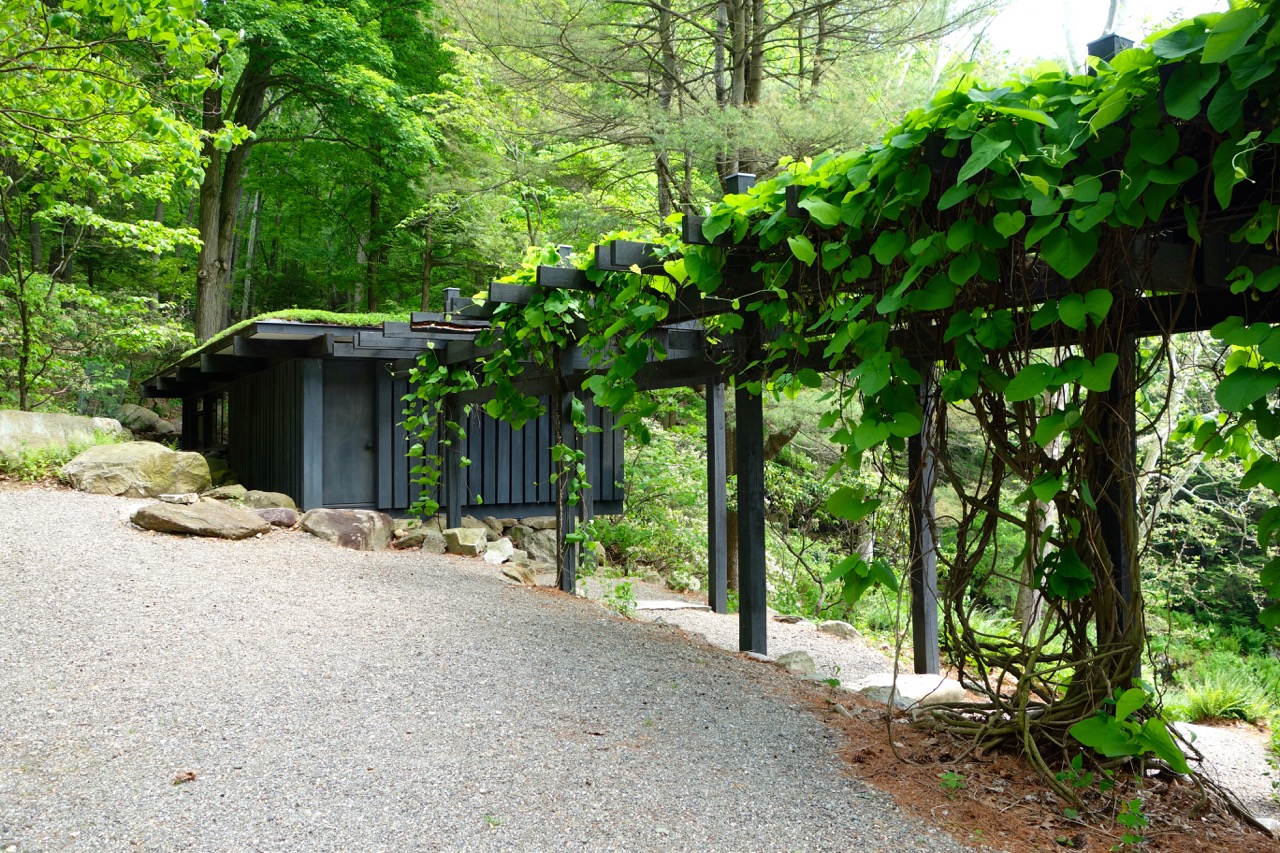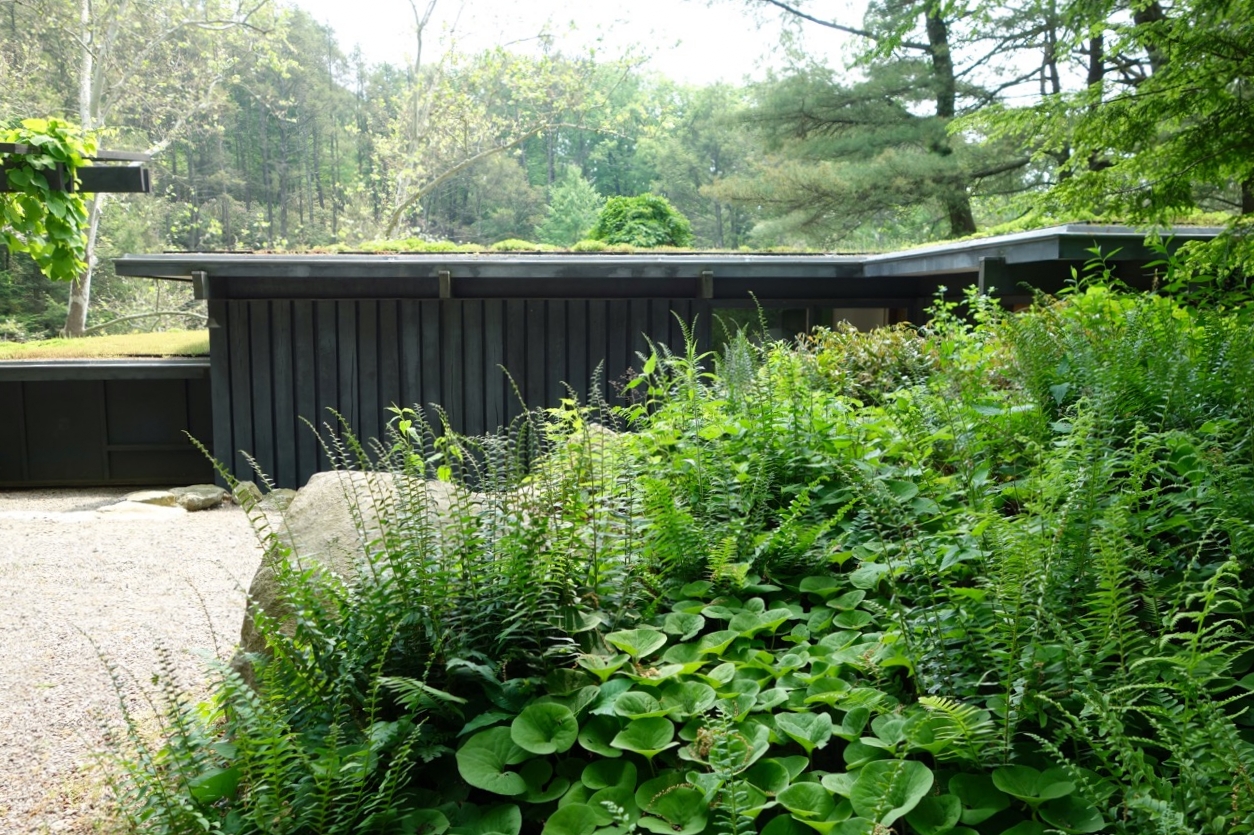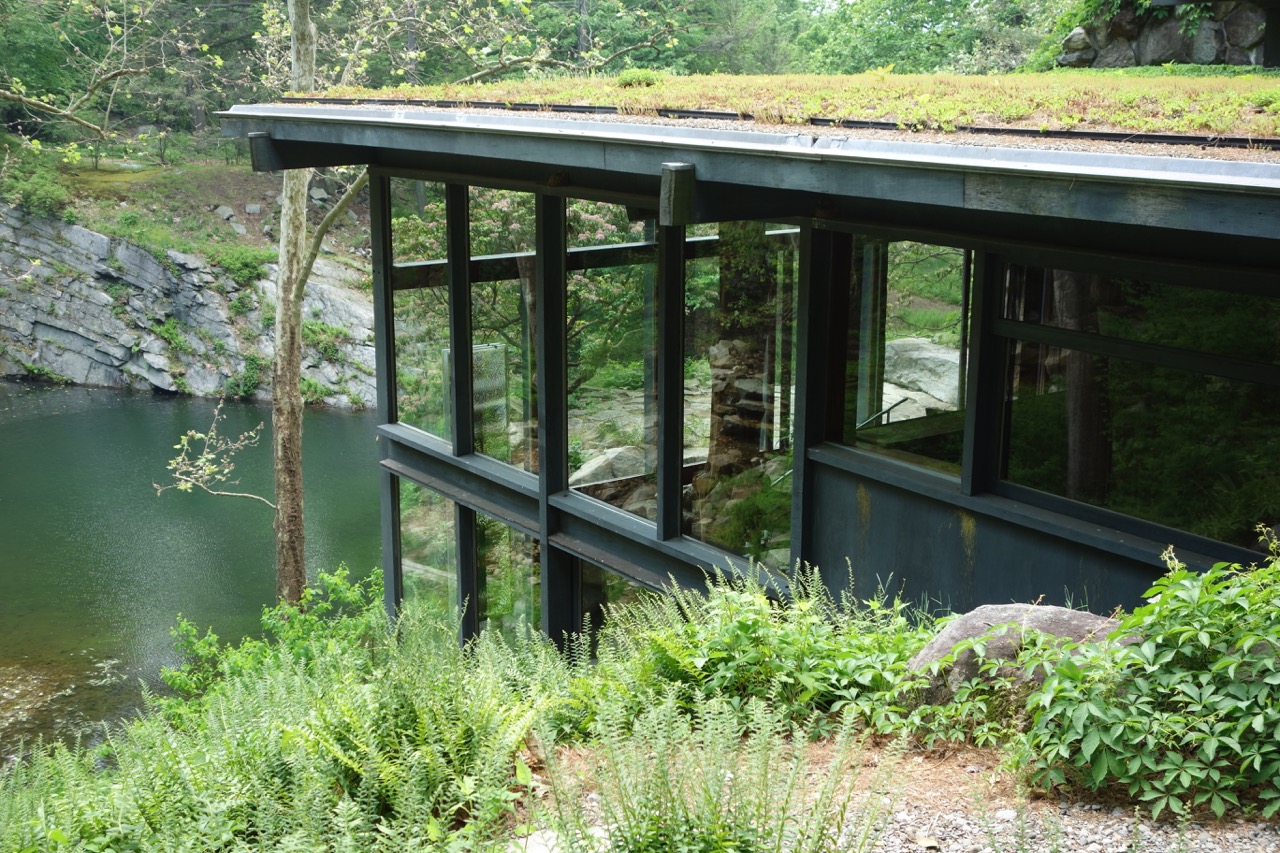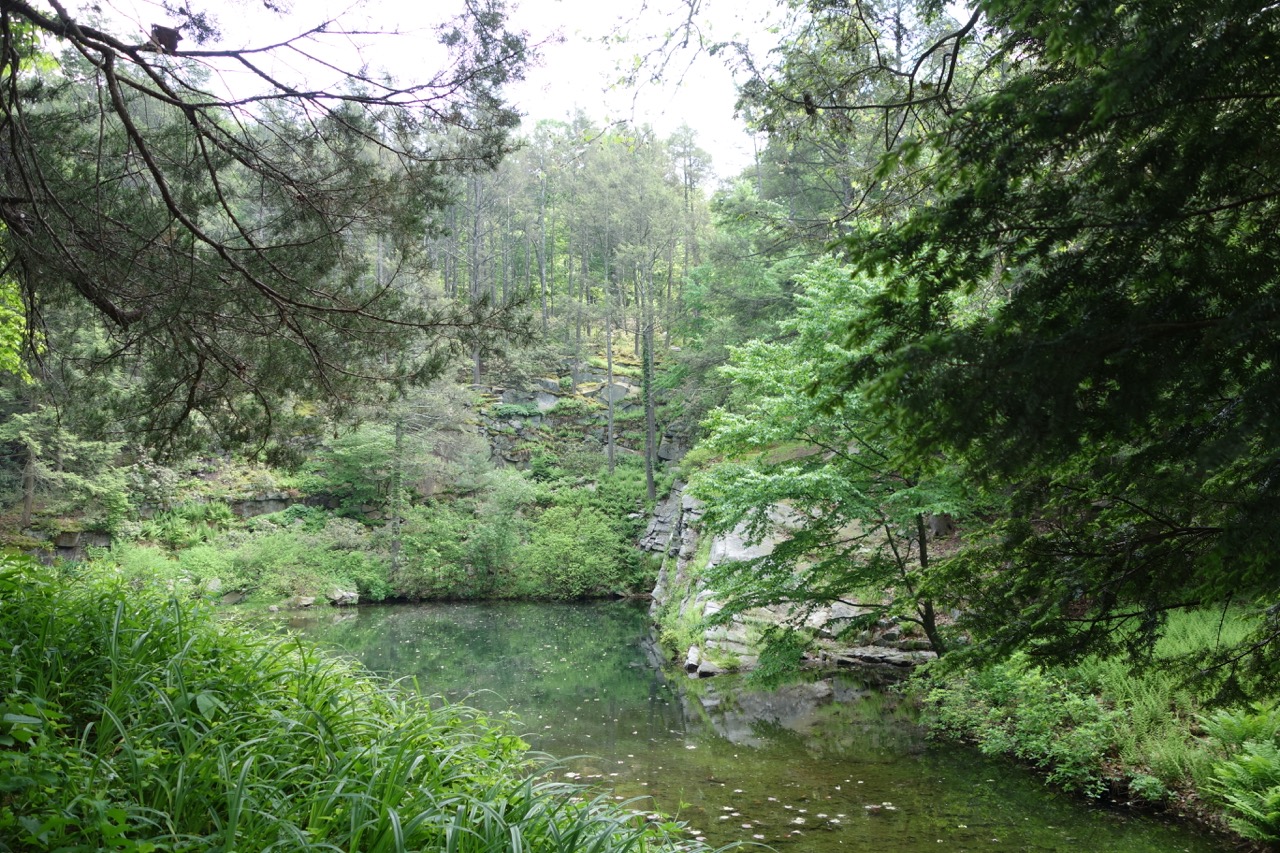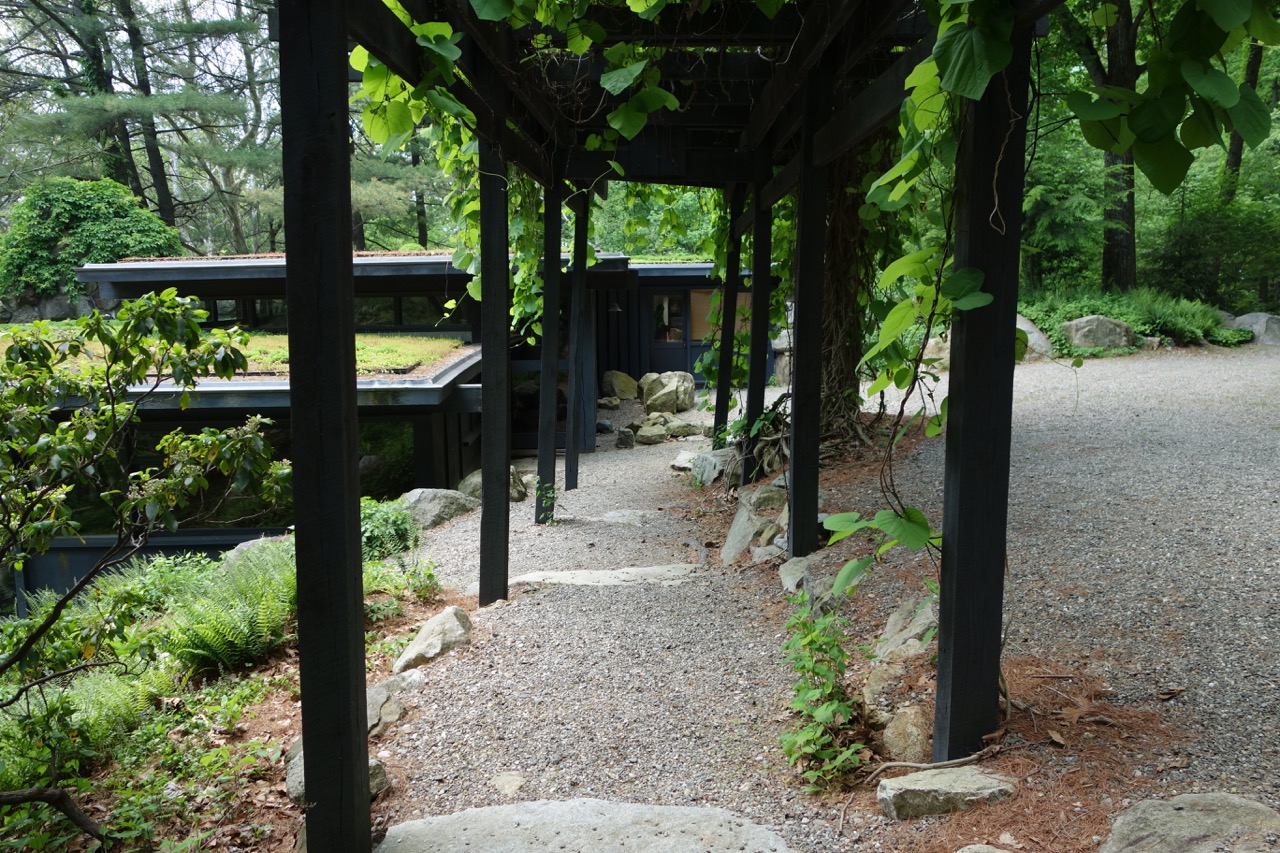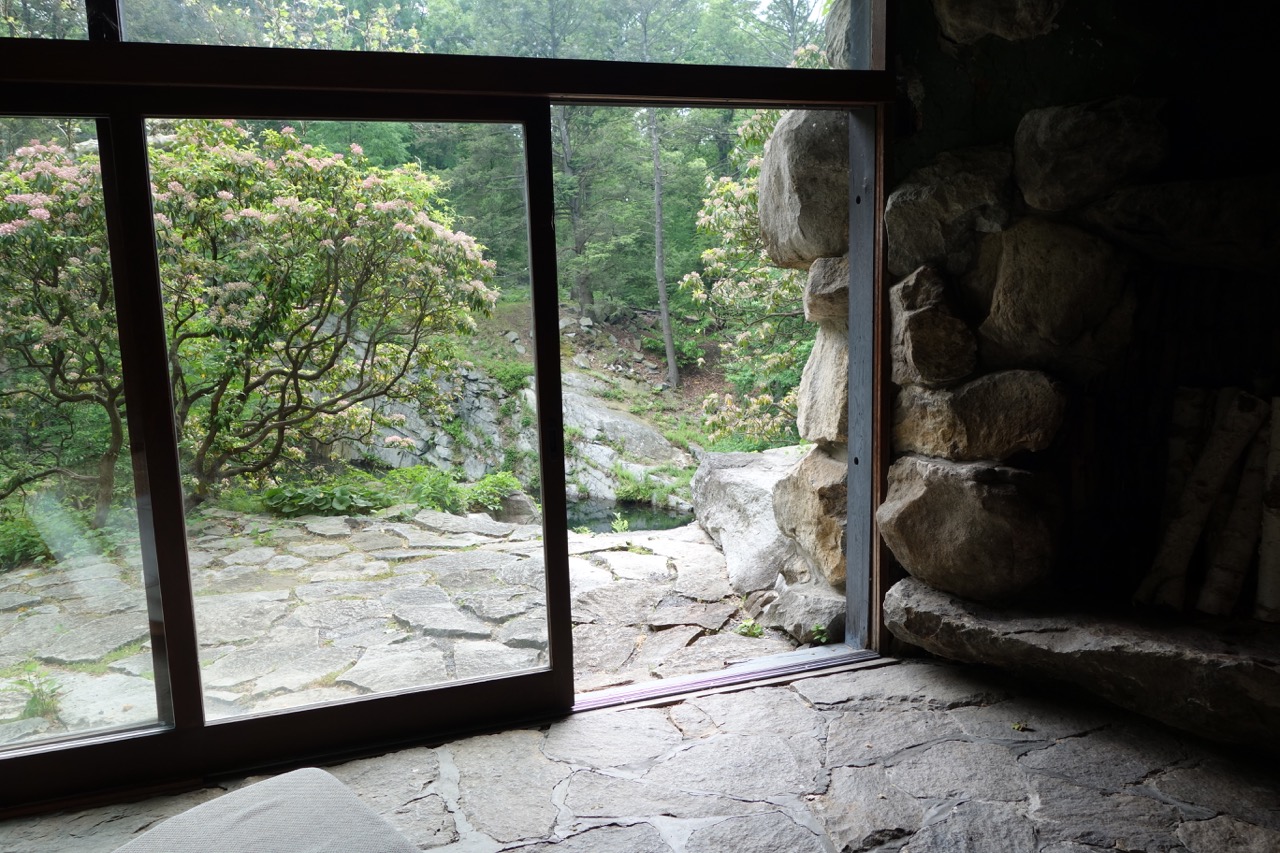What happens when a very successful lifestyle designer takes control of an abandoned quarry?
The designer was Russel Wright and it was at the Old King’s quarry where he created his home and studio: Manitoga.
A tea pot, cup and platter from Wright's American Modern collection sits in his studio.
Russel Wright is most well known for designing the breakthrough dinnerware set “American Modern.” Launched in the 1930’s, its organic forms and color scheme remain fresh and contemporary. With the help of his wife, Mary Einstein, he marketed the idea that “good design is for everyone.” They made the line affordable and accessible with a twelve-piece starter set and interchangeable complementary colors. They encouraged people to add to their collection as their budgets allowed. “American Modern” went on to become the best-selling tableware set ever. When I was a kid growing up in America in the 60’s and 70’s, it seemed that everyone I knew had at least one Wright-designed piece - he was everywhere. Even the Metropolitan Museum of Art has a set in its collection.
The Landing of Henrick Hudson, based on a painting by Robert Weir, published by Martin, Johnson & Co., New York, 1857. (Gilder Lehrman Collection)
The site of Manitoga in the Hudson River valley was originally home to the Mahican people. European settlements followed Henry Hudson’s sail up the river in the early 1600’s. “By the end of the 1600’s all of the tribes living near the Hudson had been decimated by small pox, which the settlers brought with them, and wars with the Dutch. Many who survived moved west. By the end of the eighteenth century there were so few Indians, their villages were no longer noted on the maps.” (source: hhr.highlands.com)
In the 1800’s, the site was used to extract granite and for logging. When Wright purchased the land in 1942, it was considered worthless. Years of logging and stone excavation had left the site lacking soil and any level ground. This makes the transformation that much more special.
In his 1970 book A Garden of Woodland Paths. Wright said: “I am amused and pleased to often be asked, ‘How did you ever find such an unusually beautiful site?’ – pleased because these friends think that I found it this way, and therefore I know that it looks natural. “
"Russel and Mary Wright. A talented designer in her own right, Mary was considered the marketing genius who help make Wright a household name." Source: curbed.com
Wright embraced the challenging topography and used carefully edited native plantings to create something that would look and feel as if it had always been there. The most dramatic layers are the rocks, steep slopes, and stream. These features literally root the place in its geologic and industrial history. Wright explains, “I found many interesting features on my land – great sculptural boulder formations, cliffs, small ravines… and some giant trees, and by climbing some of them, I discovered great vistas of the river.” Architect David Leavitt designed the exterior of the house in the Organic Modern style. It blends seamlessly into the surroundings.. I love the green roof! Truly ahead of its time.
Access to the house and garden requires a tour that is well worth it. Get tickets in advance because they do sell out.
In 1996 Manitoga was listed on the National Register of Historic Places. Manitoga/The Russel Wright Design Center's mission is "to preserve the legacy of pioneer designer Russel Wright:his home, landscape, products, archives and philosophy."
Don’t miss this beautiful site!
Russel Wright and his wife Mary Einstein efforts to make good design commonplace included their book Guide to Easier Living. This copy sits on a table at the house.

